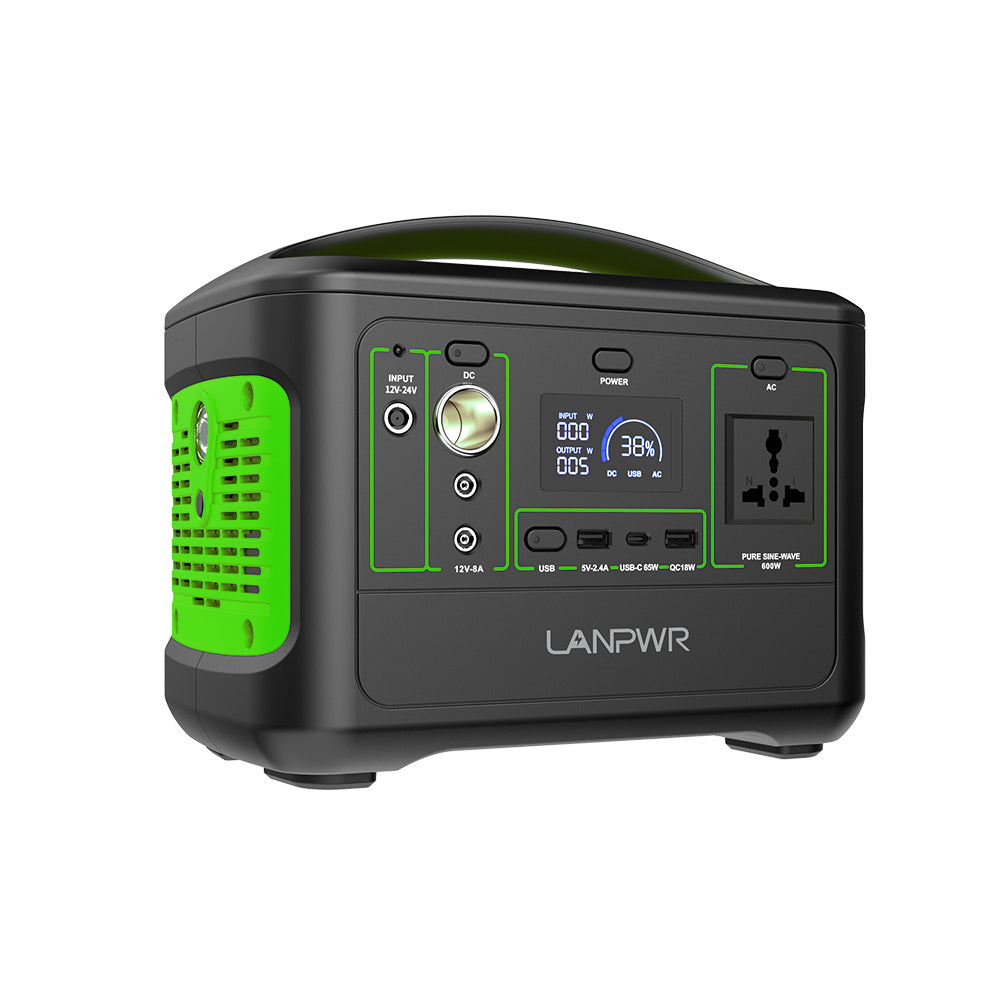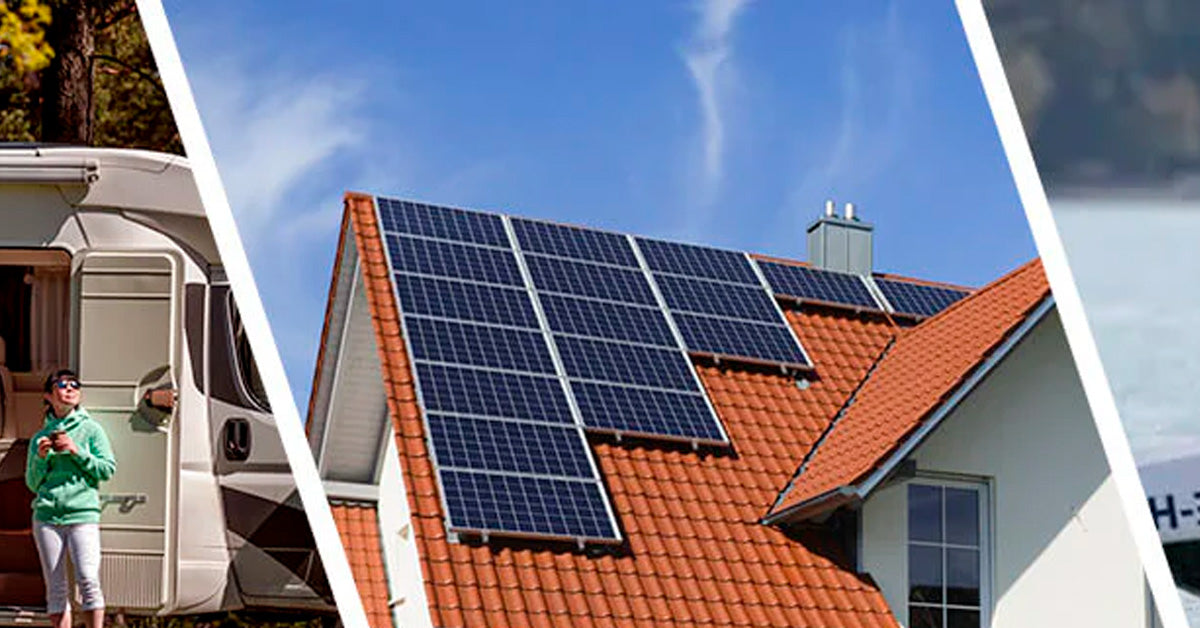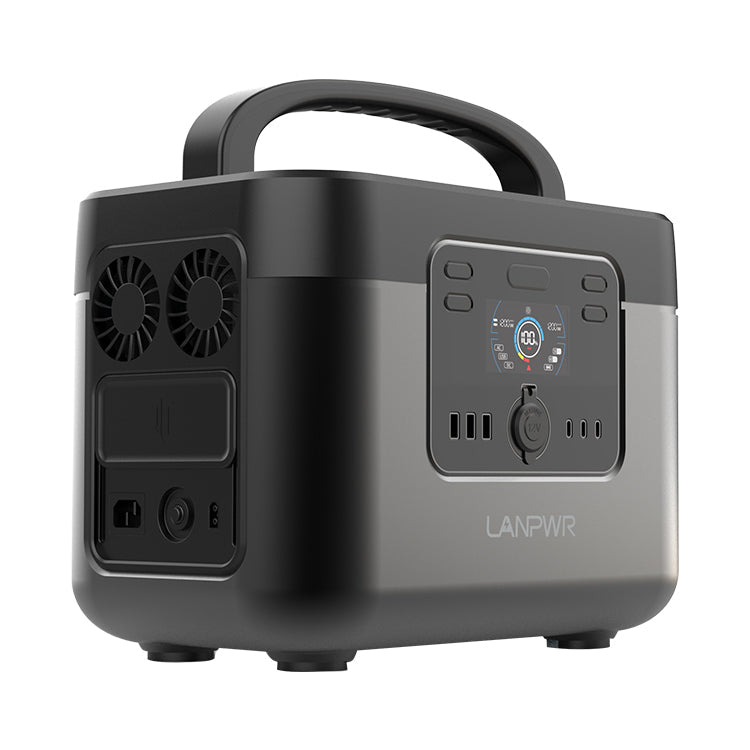A portable power station is now a necessary tool for contemporary living, proffering steadfast, easy-to-handle power sources for a myriad of applications. A portable power station could be a lifesaver when you are camping, power goes out, or working from home! One of the most frequent queries among those interested is, 'How much do portable power stations last? The lifespan of the device itself is more or less irrelevant, it's the half-life of the charge where everything gets murky. We will be discussing both the good and the bad in this article to have a more detailed explanation of how and why the longevity and usage of portable power stations are maintained)
Portable Power Stations Explained
A portable power station is a high-capacity battery that comes in a tough case and also comes with a wide range of outlets to be able to operate different devices or recharge devices. They are usually solar panels, wall outlets, or car chargers rechargeable, which means they are versatile. They are rated by capacity, usually in watt-hours (Wh), which tells you how much energy the battery holds.
Battery life cycle of a Portable Power Station
Factors Influencing Lifespan
Battery Type: The life span of portable power stations largely depends on the battery type. Lithium-ion (Li-ion) (including lithium cobaltite and lithium manganese oxide varieties) and lithium iron phosphate (LiFePO4) batteries are the two most common types. 48Li-ion batteries that we use in our devices for their higher energy density and lighter weight don't live much longer: they usually last from 500 to 1,000 charge cycles. LiFePO4 batteries, meanwhile, last 2,000-3,000 cycles but with a higher price tag and weight.
How frequently and how much you withdraw from your portable power station will also affect its lifespan; Deep discharges regularly and high power loads can accelerate the death of a battery. In principle, the battery should last longer if it can be kept between the discharge level of about 20-80%.
How you store your power station can also extend its lifespan. The lifespan of a battery will shorten dramatically if it is in an environment that is too hot or too cold. Keeping your device in a cool, dry place and not letting it stay too long in the heat or freezing temperatures may also help your device stay healthy.
Maintenance of the battery, for example, charging at regular intervals when not in use. Many manufacturers give recommendations of best practices for maintenance.
Expected Lifespan
Taking all of these into consideration, a decent portable power station will last up to 3-10 years. In simple terms, LiFePO4 batteries typically last longer since they feature a higher cycle rating. For example, a LiFePO4 battery installed in a power station operated within its ideal temperature window can ideally last its user between 5-7 years. In contrast, Li-ion batteries may have to be replaced after 3 to 5 years depending on how much you use and take care of them.
Duration of Charge
Capacity and Power Output
It has the power (measured in watt-hours) to continue to run devices for a certain period, and the battery life (measured in watts) consumed by the connected devices.
For example:
A 50-watt device could theoretically run off of a 500Wh power station for ten hours (500Wh / 50W = 10 hours).
By the same token, a 1,000Wh power station could keep that same 50-watt device powered up for 20 hours.
Power Consumption of Devices
Devices are also different in power efficiency.
Common Examples Include
Smartphones: 5-15 watts
Laptops: 30-60 watts
LED lights: 5-20 watts
Mini fridge: 50-100 watts
CPAP machine: 30-60 watts
Knowing how much power your devices draw, will allow you to determine how long your portable power station will keep the lights on for.
Real-World Scenarios
For instance, in real-world applications, we might have a weekend camping trip. For example, if you have a 500Wh portable power station and you run the following devices:
LED light: 10W 5h/ night = 50Wh
Smartphone: 10W x 2 hours/day = 20Wh
150Wh of computer (assuming 50 watts for 3 hours a day laptop)
For two days of camping:
LED light: 50Wh x 2 = 100Wh
Smartphone: 20Wh x 2 = 40Wh
Laptop: 150Wh x 2 = 300Wh
Add 100Wh liposuction + 40Wh holding out + 300Wh desmopression = 440Wh total
So, do not worry, a 500Wh power station is more than enough for the weekend, with extra juice.
Proper Charging Practices
Prevent Overcharge: Regular overcharging will also shorten the life of the battery. Even though in most modern portable power stations overcharge protections are included; it is best to encourage unplugging once the device is fully charged.
The perfect charge cycle: Once your Lithium-ion batteries go below 20% charge level charge them. LiFePO4 batteries are less delicate but still prefer to have depth-of-charge kept manageable.
Efficient Usage
If you are searching for a power station for your professional use, you might need something with features like prioritizing essential devices during a power outage or any critically dire situation to prevent the utilization and power grid for a long time and to focus on the other bigger things first.
Energy-Efficient Devices: If you use energy-efficient devices then there is less power consumption. As an example, LEDs use only a fraction of the power incandescent light bulbs consume.
Regular Maintenance
Keep the power station between 30%-70%, Charge the power station every 3-6 months even if it is not used.
To avoid issues, clean and inspect the power station now and then to see if there are any damages or wear. This guarantees the best performance and safety are met.
Summary
Portable power stations are the ultimate portable tool that helps keep you moving with ease and dependability. The life of the battery and how long it holds a charge depends on the type of battery, its usage, and maintenance. A well-maintained high-quality power station can serve you for many years without hanging, meeting performance as it was you bought. Having the ability to understand your power needs and the power station's capabilities can make all the difference in efficiency and how long your power station provides energy so you have it when... and where... you need it.














Leave a comment
This site is protected by hCaptcha and the hCaptcha Privacy Policy and Terms of Service apply.